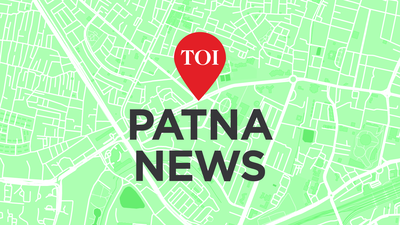- News
- City News
- patna News
- ‘Policies exist, but their implementation lags’
Trending
‘Policies exist, but their implementation lags’
Patna: The geographical location of Bihar cities on the Indo-Gangetic plain makes them vulnerable to air pollution. Ekta Shekhar, founding director of The Climate Agenda, while talking to TOI's Faryal Rumi, said that while policies exist on paper, their implementation remains weak. Excerpts:
Why do cities like Patna need clean and inclusive public transport?
If people of the city have to struggle for their basic needs like safe, accessible, and affordable transportation, it should be a concern. The Bihar State Pollution Control Board has acknowledged that 19% of Patna's air pollution comes from the transport sector. There is a great need for clean transport. The Union govt had allocated 150 electric buses to Patna, but even after months, the local administration does not have clear information on this. It is not just a matter of policy announcement, but also of its implementation.
Vehicular emission is a major contributor to air pollution in many cities in the Indo-Gangetic plain. What are the factors that require urgent policy interventions?
How crucial is sustainable urban mobility in the Indo-Gangetic plain for addressing health issues linked to air pollution and its impact on the region's socio-economic opportunities?
Air pollution from road dust and transport remains a critical concern, as highlighted by the National Clean Air Program's (NCAP) analysis. The geographical layout creates a persistent pollution trap, leading to prolonged exposure. According to a report, air pollution ranks as the third leading cause of mortality worldwide, with clear scientific evidence linking it to heart attacks and various diseases. The significance of public transport extends beyond environmental concerns to socio-economic equality.
How prepared are our lawmakers and policymakers for climate-conscious development, particularly in densely populated cities like Patna?
The mayor of Gaya recently initiated official proceedings to secure buses for public transport, of which she did not have information earlier. In Patna also, information deficiency hampers progress. The fundamental issue lies in the delayed transmission of state govt policy announcements to local administrative levels. Our organisation's function has become crucial in addressing these administrative shortcomings.
What are the ongoing govt-supported projects helping address the issues that you are highlighting?
The administration is implementing various initiatives across different sectors. Through the NCAP, substantial funding is being distributed to states for pollution control and for creating detailed records of pollution sources within their cities. The introduction of public transport systems represents an encouraging beginning. The administration has undertaken substantial measures in the brick manufacturing sector. However, success requires these initiatives to be supported by accurate data, local research, and community engagement to ensure lasting outcomes.
What interventions are you advocating for climate action and inclusive urban mobility? How are you supporting govts?
We are actively monitoring the implementation of govt-backed electricity initiatives across various cities. Our focus extends to the timely establishment of three distinct charging infrastructure systems. Public transport requires both technical solutions and behavioural adjustments. Hence, we are conducting awareness campaigns to promote environmentally conscious and health-friendly transport choices, complementing govt efforts. To ensure evidence-based decision-making, we have partnered with institutions like IIT and Enviro Catalysts. We have incorporated NIT urban planners and architects to develop inclusive planning strategies that reflect ground realities. In cities where we operate, including Patna, we have established city forums to create comprehensive documentation.
Why do cities in Bihar continue to remain among the most polluted towns in the country, according to the CPCB's daily bulletin?
The EV announcements have been made, but I don't think even 10 EVs are running in Patna. One issue is this gap, and another is the lack of better transport infrastructure.
End of Article
Follow Us On Social Media









